Animals have different kinds of use for our ecosystem which is why animals need a complete body part, according to the physiology of their bodies, to perform well. They need complete arms, feet, and some animals need a heart and brain.
Almost all animals have tails, and they have a different use for their tails. However, some animals don’t have and don’t need tails.
Today, we are going to feature different animals that don’t have tails.
Related Article: Other Animals That Wag Tails
Mammals That Don’t Have Tails
Below are the mammals that don’t have tails:
Manx Cat

The Manx cat is a breed of cat, and that belongs to the Felidae group. If you search on google the pictures of the Manx cat, you will notice that these cats have no tails at all. However, they have tails, but it is too small to be seen.
Other types of cats have no tails, and you know how this happened? It happened a hundred years ago when a genetic mutation happened that caused many kitties on the Isle of Man to be born without any tails.
Even though they don’t have tails, Manx cats can still walk and balance themselves. Also, female Manx cats can still give birth despite having no tails.
Although most Manx cats have short tails or no tails at all, some Manx cats have long tails. The tails of Manx cats might have different lengths of tails. They have incomplete dominant genes, so sometimes Manx kittens can be born with full-length tails.
Apes

Most monkeys have tails, but apes don’t. Apes are tailless mammals native to Africa and Southeast Asia. They are humanity’s closest living relatives, and in fact, humans are considered apes as well.
There are two types of non-human apes. The two types are great apes and lesser apes. All apes have no tails just like humans. Scientists said that apes lost their tails a long time ago.
When did apes lose their tails? Apes lost their tails four million years ago. The evolution happened before the evolution of modern humans. Some of the chimpanzee fossils found by scientists proved that apes have tails a long, long time ago.
Barbary Macaques

The Barbary Macaques are a macaque species and a species of monkey native to the Atlas Mountains of Algeria and Morocco. One of the interesting facts about this monkey is that the males are integral to raising all infants.
Barbary Macaques are herbivore monkeys. They are the only monkey and only species of primates that do not have tails. However, they have tails, but it is called the vestigial tail. What does it mean? It means that when Barbary macaques grow, they lose their tails because they no longer need it.
Hyrax

Hyrax or dassies are small herbivores that have thick fur. They usually measure between 30 and 70 centimeters, and they weigh between two and five kilograms. Hyrax is native to Africa and southwestern Asia.
There are many interesting facts about Hyrax. The first interesting fact is that Hyrax don’t have tails, and they don’t need one. The other interesting fact about Hyrax will truly shock you.
Hyraxes are related to Elephants! Just wow, right? But how did Hyraxes become related to elephants? Elephants and Hyraxes descend from a common ancestor in the group of mammals known as tethytheria.
Other Animal Species That Have No Tails
The following may be obvious as to why they don’t have tails but I have listed other fun reasons why each doesn’t need a tail in the first place.
Starfish

Starfish or commonly called sea stars are animals that live under the water. They have a star shape, and they are below the class Asteroidea. Starfish have 2000 species around the world, and they are one of the fishes that cannot live in freshwater.
Aside from having no tails, starfish also don’t have brains, and they don’t have blood as well. However, they can still live up to 35 years old. Why? Because they can regenerate. Sea stars cannot die because of accidents, and the only cause of their death is old age.
The majority of sea stars are carnivores, and they love to eat mollusks like clams, mussels, and oysters. Sea stars can eat 50 small clams per week.
Jellyfish

Aside from having no tails, jellyfish have no brain, heart, bones, or eyes. They are known as sea jellies, and they look like an umbrella. The jellyfish’s mouth is placed in the center of its body.
Jellyfish are carnivorous animals, and they love to eat planktonic organisms, crustaceans, small fish, the eggs of the fish, and larvae. Also, they sometimes eat their fellow jellyfish.
Jellyfish, especially large jellyfish, can be dangerous to humans and other animals. Why? Because they sting their prey, and they release venom to paralyze their targets.
All jellyfish stings are curable using first aid. However, jellyfish such as the box jellyfish or sea wasp can be deadly and dangerous to humans.
Sea Urchins
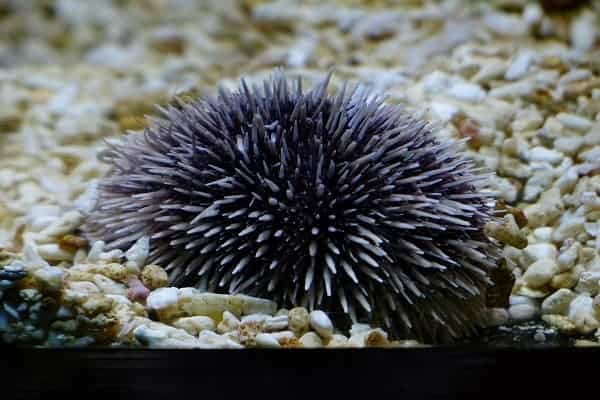
Sea urchins are spiny and globular animals that are living underwater. They belong in the class Echinoidea. There are 950 species of sea urchins that are inhabiting all oceans on Earth.
Sea urchins have no tails, and they don’t need one. They move using their feet and even their teeth, and they usually can move fast. That is why it is easy for them to catch their prey, and they can run fast from their predators.
Sea urchins love to eat anything that floats. Because of their teeth, sea urchins can crash anything they put inside their mouths. Their favorite preys are planktons, kelps, periwinkles, barnacles, and mussels.
Sea urchins can also be dangerous to humans because of the venom on their spines. The sting of the sea urchins may trigger an inflammatory reaction that can lead to paralysis, respiratory failure, and worse, death.
Corals

For those who don’t know that corals are animals, then let me tell you right now that corals are a hundred percent considered animals.
Corals are marine invertebrates under the phylum Cnidaria. They usually live in compact colonies of many different polyps. Corals are essential because this is where some fishes under the ocean live.
Corals don’t need tails. Corals come in various colors, sizes, and shapes. Even though they look like a plant, they are animals, and they are related to jellyfish and anemones.
Spiders

Spiders are arthropods that breathe on air, and they have eight legs, and they also have fangs to inject or release venom to protect themselves from their predators or to catch prey. All spiders have spinnerets that give them the ability to release webs.
There are many species of spiders, and none of them have tails. However, some relatives of spiders, vinegaroons, have an anal flagellum.
Spiders are nearsighted, and they can jump up to six times their length. Female spiders can lay up to 3000 eggs at one time.
Spiders are carnivores, and they love to eat insects like mosquitoes, flies, and moths, and sometimes they also eat their fellow spiders. They are beneficial to humans because they control the population growth of insects.
Centipedes
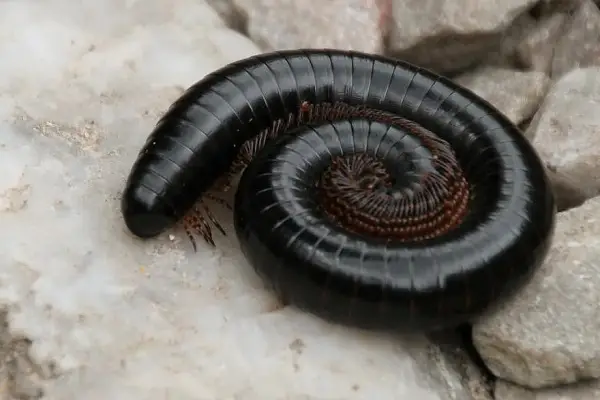
Centipedes are arthropods that belong to the Chilopoda class of the subphylum Myriapoda. The size of the centipedes can range from a few millimeters to 30 centimeters. Centipedes can be seen anywhere around the globe.
The name centipede comes from the number of their legs, which is 100 legs. This animal can have 15 to 177 pairs of legs. The legs of the centipedes are plenty that helps them to move faster. In female centipedes, their last legs are more than twice as long as their body.
Almost all centipedes are carnivorous, and they love to eat little insects like spiders, worms, and other types of arthropods. Likewise, centipedes also eat other centipedes.
Centipedes don’t have tails, and they don’t need tails because they don’t need to balance themselves and brush insects.
Millipedes

Millipedes are a part of arthropods that are well-known for having two pairs of jointed legs. The millipede’s name came from a Latin word that means a thousand feet. However, there are no single millipede species that have 1000 legs. The millipede that has many legs is the Guillaume plenipes with 750 total legs.
Even though millipedes have many legs, they are not faster as centipedes. Most millipedes are slow-moving creatures despite having many legs.
Millipedes are also beneficial for our nature because they have an essential role in disposing of different nature’s waste like dead animals and dead plants.
Millipedes also don’t have tails, and they don’t need one because they don’t need to balance themselves while moving.
Octopus

Octopuses are soft-bodied animals that have eight limbs. There are around 300 species of octopuses that are living swimming under the ocean around the world.
Aside from having no tails, another interesting fact about octopuses is the number of their heart. Octopuses are creatures underwater that have three hearts, and they have blue blood.
The common predators of octopuses are sharks, morays, and conger eels. Octopuses have a clever way to defend and escape from their predators. Octopuses squirt ink to escape their predators.
Octopuses are also known for being smart. They don’t have tails, and they don’t need tails because they can move and balance themselves using their limbs.
Amblypygi
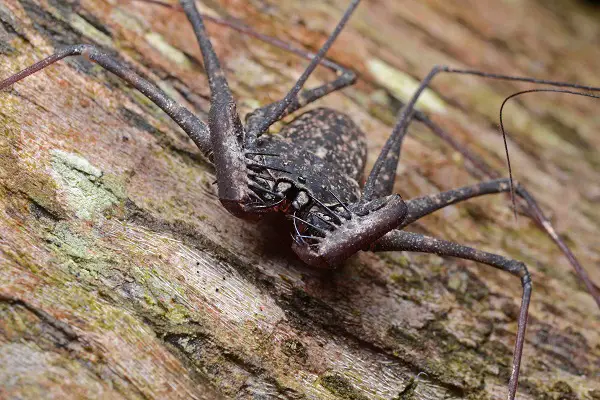
Amblypygi or known as tailless whip scorpions is a tailless ancient order of arthropods. They are also known as whip spiders. Unlike other scorpions, amblypygid has no tails This type of scorpion can be found in tropical and subtropical regions of the world.
Whip spiders are considered dangerous by most humans because of their terrifying looks. However, even though they may look scary at first glance, this creature is not poisonous at all, and they are safe to be around with humans.
The usual food of this tailless whip scorpion is insects like moths, flies, mosquitoes, and spiders. They prefer eating huge insects rather than small insects.
Barnacles
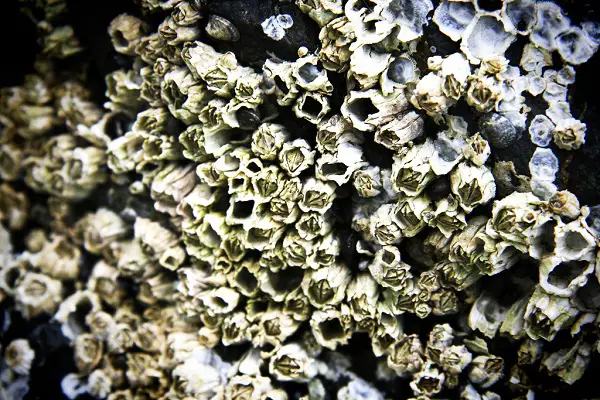
Barnacles are included in the arthropod family. They are related to crabs and lobsters. Barnacles tend to live in shallow and tidal waters. Sometimes they can be found on rocks on the shore of the ocean.
Barnacles can look like a static animal. However, they are still eating, and they love to eat planktons and shrimp-like larvae.
As you have seen in the picture above, it is quite obvious that barnacles don’t have tails, and they don’t need to have one.
Kiwi Birds
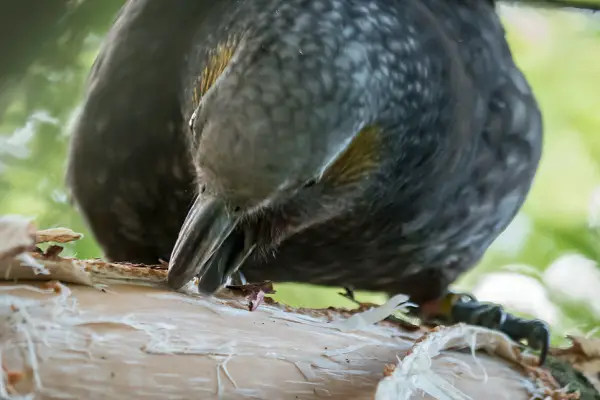
Kiwi birds are one of the species of birds that can’t fly. They have wings, but it is too small to make them fly. Also, kiwi birds have no tails.
Kiwi birds can be seen in New Zealand, and their sizes are like domestic chickens, and they are the smallest living ratites.
Animal That Has The Strongest Tail
Some animals have a strong tail that can harm other animals and humans as well. Who is this animal?
Which animal has the strongest tail?
The animal that has the strongest tail is the blue whale. However, their tail is not the only part of their body that is strong but their whole body. Blue whales are very strong, and they are the strongest and biggest animal in the world.
They are so big, and their tails are very dangerous because it can send any boat or ship back to the shore with one flick!
Even though blue whales are huge, they do not like to intake big fishes and humans inside their stomachs. They love to eat shrimps, planktons, and krills. Another interesting fact about blue whales is the weight of their tongue. Their tongue has the same weight as an elephant. That is heavy!
What Is The Use Of Tail In Animals?
Even though most people think that the tails on an animal look like a useless part of their body, eventually, it has many uses.
Land animals that have tails use their tails to brush away insects that bite and irritate them. While some animals like cats and kangaroos use their tails to balance themselves. Also, monkeys with tails use their tails to climb the trees.
Fishes that have tails use their tails to displace enough water with each stroke they make. It helps fish to move forward, and to go right and left. Other exotic animals and insects that have tails use their tails to transmit their poison into their targets.
Dogs are the famous animals that use their tails. They use their tails to maintain their balance when they walk, sit, and lie down. Dogs also use their tails to show emotions, especially to their owners.
Final Thoughts
Every part of an animal has its purpose. God wouldn’t put that part of the body to animals if it has no use. Tails are essential for animals that have tails. However, some animals do not need tails to survive, and they can still function properly.





